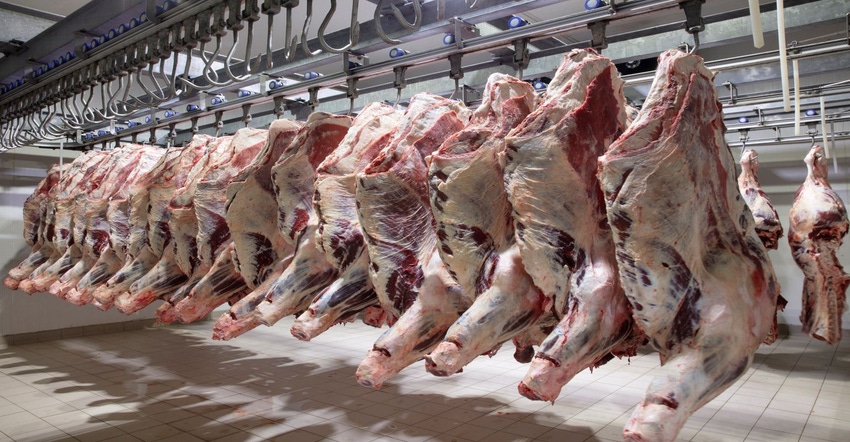Just like other technology, ultrasounds have expanded and gotten better over time.
March 16, 2023

As many of you are likely aware, the birthplace of carcass ultrasound for use in the purebred cattle business began at Iowa State University in the late '90s. The first “CUP” Lab, which stands for Centralized Ultrasound Processing, was operated in the basement of Kildee Hall. The business quickly outgrew the capabilities of the research university setting. Not only was the demand for data strong, but the turnaround time expected by breeders was simply more than a group of graduate students could handle. Within five years, most breed associations had jumped on board and the business had been outsourced from the university.
Fast-forward to today where there are three labs in the U.S. with roughly 125 technicians collecting images on farms nationwide, and the data is used globally across virtually all segments of the beef industry. Ironically, these numbers have actually remained quite constant for the past two decades. The same three labs and a critical mass of technicians have served the industry quite well for some time. So why this article then?
Well, in 2017, two new ultrasound machine technologies entered the market. There had been others in the past, but none of them gathered significant market share, so they quickly went away. These two platforms, the Evo and the ExaGo, marked the first digital systems in use. It was like going from bunny ears television to livestreaming on your smart TV. The traits of interest (ribeye area, back fat, and marbling) did not change, nor did the method of collecting them. What did change were the consistency from machine to machine, and the prediction models for IMF (intramuscular fat) or marbling.
Probably the more significant change that occurred over the same time period (1998-2018) was the CATTLE. The original research that generated carcass ultrasound technology was largely performed on Choice-Select cattle, or an IMF range of 2.0-9.0%. Now, it is not uncommon to find yearling cattle with 14+% IMF. The newer technology appears to be more accurate on high-grading cattle, largely because the prediction models were developed and tested on more USDA Prime carcasses.
These new platforms also are less prone to things like electrical interference, which can create “noise” in an image that may cause an over-inflation of the IMF value. All said, there’s reason to believe the ultrasound data being generated today is more accurate to the true carcass value of the animal than when the technology was first introduced. And this is, more or less, what you’d expect from a technology company: better and faster information.
As a breeder or bull buyer, it is also important to note that technicians have adopted this new technology very rapidly. Many techs already were looking to upgrade equipment. The old platforms were no longer being manufactured or even serviced, and parts were impossible to find. As a result, the ultrasound data under your nose in a bull sale catalog may be generated by a different machine than what you saw last year. Likewise, you also may notice a change in the group average IMF value and/or the ratios. All these things are possible, but even if the numbers are lower it does not mean there’s something wrong or that somehow the cattle are just worse than a year ago. Study EPDs first, and you’ll still land on the best genetics for those traits.
The Ultrasound Guidelines Council (UGC) is an industry board organized by the breed associations in the U.S. It’s charged with setting the guidelines and standards for including ultrasound data in genetic evaluations for pedigreed cattle. This group has spent the past five years testing every machine currently in use nationwide. The verdict? Carcass ultrasound data is more accurate, more consistent, and more reliable than it ever has been.
You May Also Like



